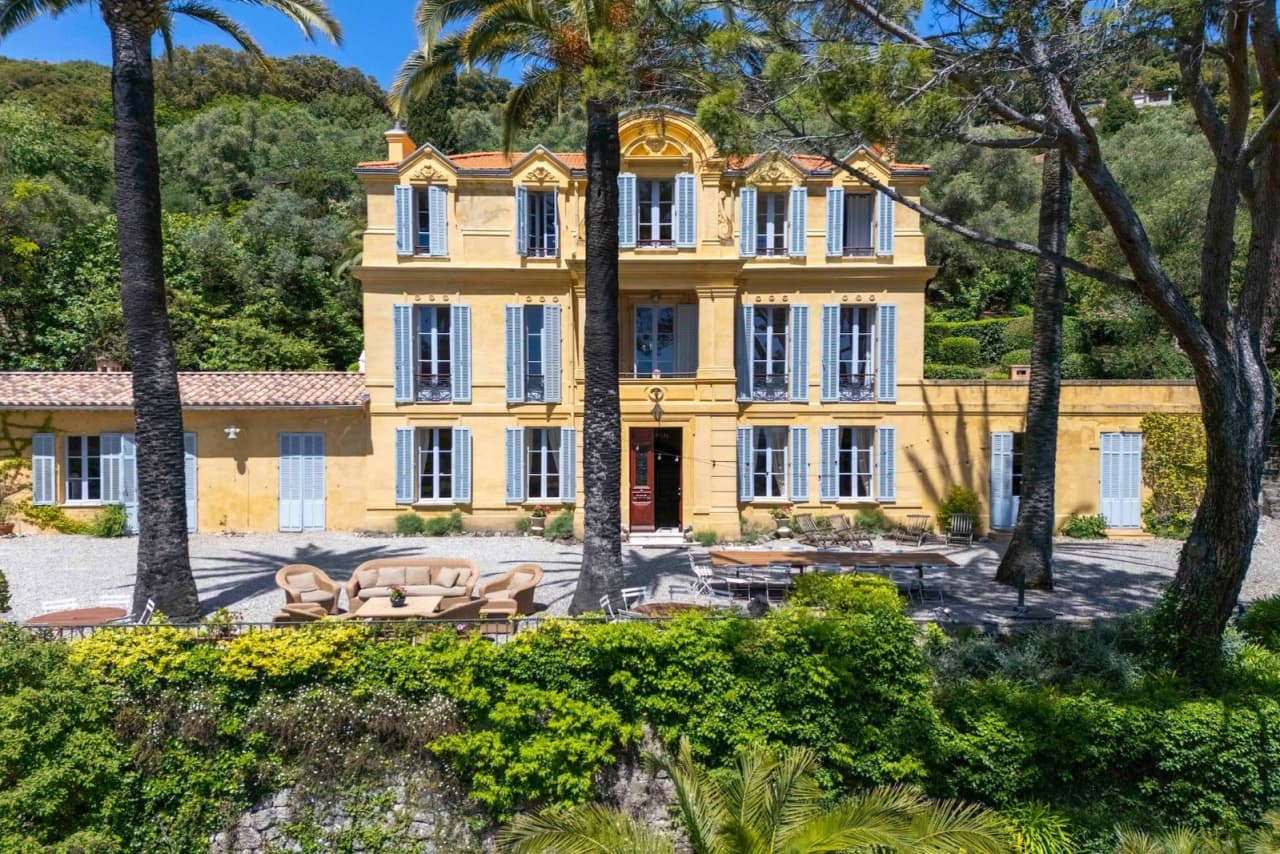Are Trendy Fractured Mirrors Too ‘Psycho’ for the Home?
Some interior designers appreciate the artful, sliced-up look of split mirrors. Others find them difficult to integrate into décor, and as creepy as the fragmented opening credits in Alfred Hitchcock’s horror classic.
For the recurring series That’s Debatable, we take on a contentious issue of the day and present two spirited arguments—one in favor and the other emphatically opposed.
Are fractured mirrors cool or creepy? Stylish or sinister? We asked pros for their takes on this interior design trend. Plus, five picks for split mirrors worth considering.
No, their slices and shifts make them art objects

FOR KELLY WEARSTLER, mirrors with intentional slices or shifts in their glass offer uninterrupted pleasure. The interior designer hung Lee Broom’s “graphic and playful” Split Long Mirror in the dining room of her Beverly Hills home (left). Large chunks of its capsule shape slip out of line, and its simple black frame follows. Ms. Wearstler said she likes how the mirror refracts light and remixes the reflection of the room and its inhabitants: “Fracturing a mirror into segments immediately alters how you perceive yourself in it, shifting its basic function into an experience.”
Any object that breaks from its traditional form adds a “cool” element of interest and texture to a room, said Suki LaBarre, vice president of merchandising and e-commerce at New York-based ABC Carpet & Home, which sells similarly constructed looking glasses. “The style transforms what is typically a utilitarian object into a statement décor piece.”
Peter Spalding, an interior designer in Portland, Ore., and co-founder of design trade marketplace Daniel House Club, points to a celebrated precedent, the “glamorous” wall of alternating angled strips of mirror in British Art Deco designer Syrie Maugham’s 1930s London apartment. It’s an idea he’d gladly borrow. “A wall of fractured mirrors behind a banquette to define a dining area would be pretty dreamy,” he said, noting that such elements of surprise “elevate [design] from the mundane.”
Instagram and Pinterest have catalyzed interest in fragmented mirrors in recent years. As Los Angeles interior designer and social media influencer Dani Dazey points out, the mirrors “make for a great outfit selfie. The more unique the photo, the more your content is going to stand out.”
Yes, it’s creepy to look at your fractured self
THE SUPERSTITIOUS among us believe broken mirrors bring bad luck—or worse. “There are stories of fractured reflections capturing your soul in very early Roman history,” said Kara Phillips, an interior designer in Fort Worth, Texas, who prefers her mirrors retiring and intact. Ominous mythology aside, these designs create an unwelcome dark and edgy mood, said New York City designer Emma Beryl Kemper, who avoids the style because of the “hardness” and “sharpness” it brings to a space. Another detractor, Sydney interior designer Kate Nixon, agrees. “I seek to create homes that feel warm and inviting, not jarring or uncomfortable,” she said.
It’s this disturbing quality that turns off many naysayers. Think of the opening credits sequence of Alfred Hitchcock’s “Psycho,” where fragmented typography portends a psychotic break. While no one is suggesting such mirrors will lead you to over-identify with your mummified mother, “it’s creepy to look at your fragmented self,” objects Steffie Oehm, an interior designer in San Francisco. They irk Toronto designer Rivki Rabinowitz for different reasons. “For something as benign as a mirror, I am inexplicably irritated by them,” she said, adding that she can’t help but feel they’re “reminiscent of a closeout sale where rows and rows of overly gilded mirrors are featured alongside…literally fractured ones.”
Others reject the specificity of the design. Said Ms. Nixon, “They’re difficult to install in a sophisticated way and to mix-and-match with other styles and eras.” But for San Francisco designer Tay BeepBoop, the bottom-line is that such mirrors can’t even perform their core function: competently reflecting one’s image. “If I need a mirror, I don’t want to look into something wonky,” she said.
IMAGE SPLITTERS
Five more mirrors that break with tradition
Massimo Mirror, $1,250, ArteriorsHome.com
John Richard A Tale of Two Exotic Gold Mirror, $2,363, GraysonLiving.com
Seletti Double Sense Mirror, $699, Lightology.com
Hidden Mirror, $7,315, PoruStudio.com
Revne Mirror, $2,530, JohnRichard.com
The Wall Street Journal is not compensated by retailers listed in its articles as outlets for products. Listed retailers frequently are not the sole retail outlets.
 Copyright 2020, Dow Jones & Company, Inc. All Rights Reserved Worldwide. LEARN MORE
Copyright 2020, Dow Jones & Company, Inc. All Rights Reserved Worldwide. LEARN MORE
This stylish family home combines a classic palette and finishes with a flexible floorplan
Just 55 minutes from Sydney, make this your creative getaway located in the majestic Hawkesbury region.
As Paris makes its final preparations for the Olympic games, its residents are busy with their own—packing their suitcases, confirming their reservations, and getting out of town.
Worried about the hordes of crowds and overall chaos the Olympics could bring, Parisians are fleeing the city in droves and inundating resort cities around the country. Hotels and holiday rentals in some of France’s most popular vacation destinations—from the French Riviera in the south to the beaches of Normandy in the north—say they are expecting massive crowds this year in advance of the Olympics. The games will run from July 26-Aug. 1.
“It’s already a major holiday season for us, and beyond that, we have the Olympics,” says Stéphane Personeni, general manager of the Lily of the Valley hotel in Saint Tropez. “People began booking early this year.”
Personeni’s hotel typically has no issues filling its rooms each summer—by May of each year, the luxury hotel typically finds itself completely booked out for the months of July and August. But this year, the 53-room hotel began filling up for summer reservations in February.
“We told our regular guests that everything—hotels, apartments, villas—are going to be hard to find this summer,” Personeni says. His neighbours around Saint Tropez say they’re similarly booked up.
As of March, the online marketplace Gens de Confiance (“Trusted People”), saw a 50% increase in reservations from Parisians seeking vacation rentals outside the capital during the Olympics.
Already, August is a popular vacation time for the French. With a minimum of five weeks of vacation mandated by law, many decide to take the entire month off, renting out villas in beachside destinations for longer periods.
But beyond the typical August travel, the Olympics are having a real impact, says Bertille Marchal, a spokesperson for Gens de Confiance.
“We’ve seen nearly three times more reservations for the dates of the Olympics than the following two weeks,” Marchal says. “The increase is definitely linked to the Olympic Games.”

Getty Images
According to the site, the most sought-out vacation destinations are Morbihan and Loire-Atlantique, a seaside region in the northwest; le Var, a coastal area within the southeast of France along the Côte d’Azur; and the island of Corsica in the Mediterranean.
Meanwhile, the Olympics haven’t necessarily been a boon to foreign tourism in the country. Many tourists who might have otherwise come to France are avoiding it this year in favour of other European capitals. In Paris, demand for stays at high-end hotels has collapsed, with bookings down 50% in July compared to last year, according to UMIH Prestige, which represents hotels charging at least €800 ($865) a night for rooms.
Earlier this year, high-end restaurants and concierges said the Olympics might even be an opportunity to score a hard-get-seat at the city’s fine dining.
In the Occitanie region in southwest France, the overall number of reservations this summer hasn’t changed much from last year, says Vincent Gare, president of the regional tourism committee there.
“But looking further at the numbers, we do see an increase in the clientele coming from the Paris region,” Gare told Le Figaro, noting that the increase in reservations has fallen directly on the dates of the Olympic games.
Michel Barré, a retiree living in Paris’s Le Marais neighbourhood, is one of those opting for the beach rather than the opening ceremony. In January, he booked a stay in Normandy for two weeks.
“Even though it’s a major European capital, Paris is still a small city—it’s a massive effort to host all of these events,” Barré says. “The Olympics are going to be a mess.”
More than anything, he just wants some calm after an event-filled summer in Paris, which just before the Olympics experienced the drama of a snap election called by Macron.
“It’s been a hectic summer here,” he says.

AFP via Getty Images
Parisians—Barré included—feel that the city, by over-catering to its tourists, is driving out many residents.
Parts of the Seine—usually one of the most popular summertime hangout spots —have been closed off for weeks as the city installs bleachers and Olympics signage. In certain neighbourhoods, residents will need to scan a QR code with police to access their own apartments. And from the Olympics to Sept. 8, Paris is nearly doubling the price of transit tickets from €2.15 to €4 per ride.
The city’s clear willingness to capitalise on its tourists has motivated some residents to do the same. In March, the number of active Airbnb listings in Paris reached an all-time high as hosts rushed to list their apartments. Listings grew 40% from the same time last year, according to the company.
With their regular clients taking off, Parisian restaurants and merchants are complaining that business is down.
“Are there any Parisians left in Paris?” Alaine Fontaine, president of the restaurant industry association, told the radio station Franceinfo on Sunday. “For the last three weeks, there haven’t been any here.”
Still, for all the talk of those leaving, there are plenty who have decided to stick around.
Jay Swanson, an American expat and YouTuber, can’t imagine leaving during the Olympics—he secured his tickets to see ping pong and volleyball last year. He’s also less concerned about the crowds and road closures than others, having just put together a series of videos explaining how to navigate Paris during the games.
“It’s been 100 years since the Games came to Paris; when else will we get a chance to host the world like this?” Swanson says. “So many Parisians are leaving and tourism is down, so not only will it be quiet but the only people left will be here for a party.”
This stylish family home combines a classic palette and finishes with a flexible floorplan
Just 55 minutes from Sydney, make this your creative getaway located in the majestic Hawkesbury region.






















